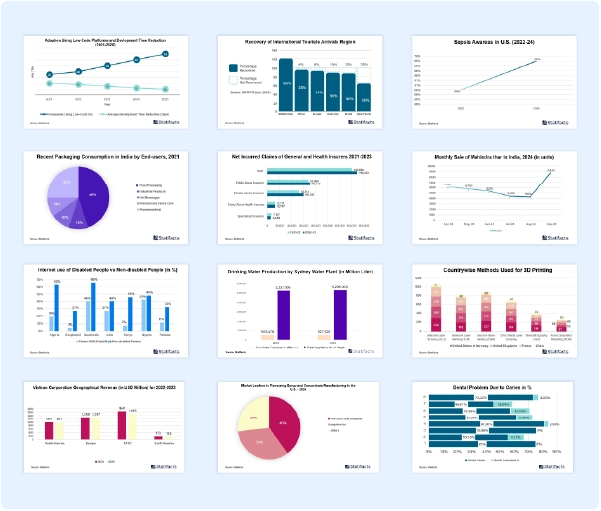

Our customers work more efficiently and benefit from
The global forensic genomics market size was evaluated at USD 579 million in 2024 and is expected to grow around USD 2,338.31 million by 2034, registering a CAGR of 14.98% from 2025 to 2034.
| Industry Worth | Details |
| Market Size in 2025 | USD 665.73 Million |
| Market Size by 2034 | USD 2,338.31 Million |
| Market Growth Rate from 2025 to 2034 | CAGR of 14.98% |
The forensic genomics market deals with the usage of genomic and epigenomic data and tools used in forensic investigations, especially but not restricted to the analysis of RNA and DNA markers. This relatively nascent field facilitates criminal investigations, paternity testing using next-generation sequencing (NGS) technology, and advanced data analytics to deliver crucial insights about forensic DNA. Targeted sequencing using genetic markers such as Short Tandem Repeat (STR) and Single Nucleotide Polymorphism (SNP) loci is allowing for unprecedented lead generation, even in decades-old cold cases. Other techniques applied include various methods for touch DNA, rootless hair, and similar forensic inputs, human enrichment techniques, and mitigation of non-human contaminants. This suite of technologies is also being used to create forensic DNA databases with millions of genetic profiles.
AutoCSA, ALP, corGen, pyBamView, and wordmatch are some of the DNA and RNA sequence analysis tools used in forensic genetic studies. The increasing demand for these sophisticated techniques is propelling growth in the forensic genomics market. With the help of DNA samples taken from hair and blood, tracking missing individuals is becoming easier. Next-generation sequencing (NGS) is widely preferred in the field due to its many advantages, such as better extraction of genetic data from small forensic mtDNA samples found in less than ideal conditions. Researchers at King’s College London are applying state-of-the-art MiSeq FGx sequencing systems to provide information-rich data compared to conventional DNA testing methods.
The development of advanced NGS, while beneficial to the market, entails significant time and cost commitments, especially prohibitive infrastructure and equipment costs for setting up forensic laboratories. Technical concerns such as lack of training, statistical applications, bioinformatics support, and recommendations around rigorous standardized guidelines are proving obstacles to growth in the market. The use of next-generation sequencing also poses challenges related to traditional ethical frameworks, especially in terms of patient and research participant privacy. These techniques generate large amounts of data, which need proper processes for data management and protection.
The use of artificial intelligence based technologies such as machine learning (ML) for sequencing and interpretation of genomic data is bringing up issued related to potential bias and implications for fiduciary obligations. The forensic genomics market is getting affected pessimistically given the instances of privacy invasion, misappropriation of genetic data, and the forensic genomic providers being at a major risk.
The forensic genomics market constantly uses artificial intelligence and machine learning in order to detect patterns in forensic DNA that human specialists may not be able to do. Enormous DNA databases can be hunted by using ML algorithms. This helps in finding out matches at an expedited rate and eases the workload of analysts with the combination of AI and forensic genomics. Also, the integration of forensic bioinformatics platforms with AI facilitates the automated orientation of DNA sequences and cell modifications. The bioinformatics tools powered by AI can recognize slip-ups in the shreds of evidence and recommend counteractive conducts.
The future of the forensic genomics market looks incredibly promising as a consequence of the introduction of advanced and better technologies, such as single-cell genomics, spatial transcriptomics, and 3D imaging technologies. The advent of third-generation sequencing techniques is expected to lead to several groundbreaking innovations in the space. Platforms such as Pacific Biosciences (PacBio) and Oxford Nanopore Technologies are making significant headway in addressing the key limitations of previous sequencing methods, such as long-range haplotype phasing, de novo assembly of large genomes, and evenness of coverage due to Guanine-Cytosine content.
The study of crumbled DNA in the forensic assessments especially is expected to see growth due to a number of novel 3D genomics techniques. More detailed data can be acquired as the extent of forensic DNA databases is expected to spread out and involve novel genomic information types similar to mitochondrial DNA (mtDNA), Y-chromosome DNA, and phenotypic markers.
For any questions about this dataset or to discuss customization options, please write to us at sales@statifacts.com
| Stats ID: | 8176 |
| Format: | Databook |
| Published: | April 2025 |
| Delivery: | Immediate |
| Price | US$ 1550 |

| Stats ID: | 8176 |
| Format: | Databook |
| Published: | April 2025 |
| Delivery: | Immediate |
| Price | US$ 1550 |

You will receive an email from our Business Development Manager. Please be sure to check your SPAM/JUNK folder too.

Unlock unlimited access to all exclusive market research reports, empowering your business.
Get industry insights at the most affordable plan
Stay ahead of the competition with comprehensive, actionable intelligence at your fingertips!
Learn More Download
Download
